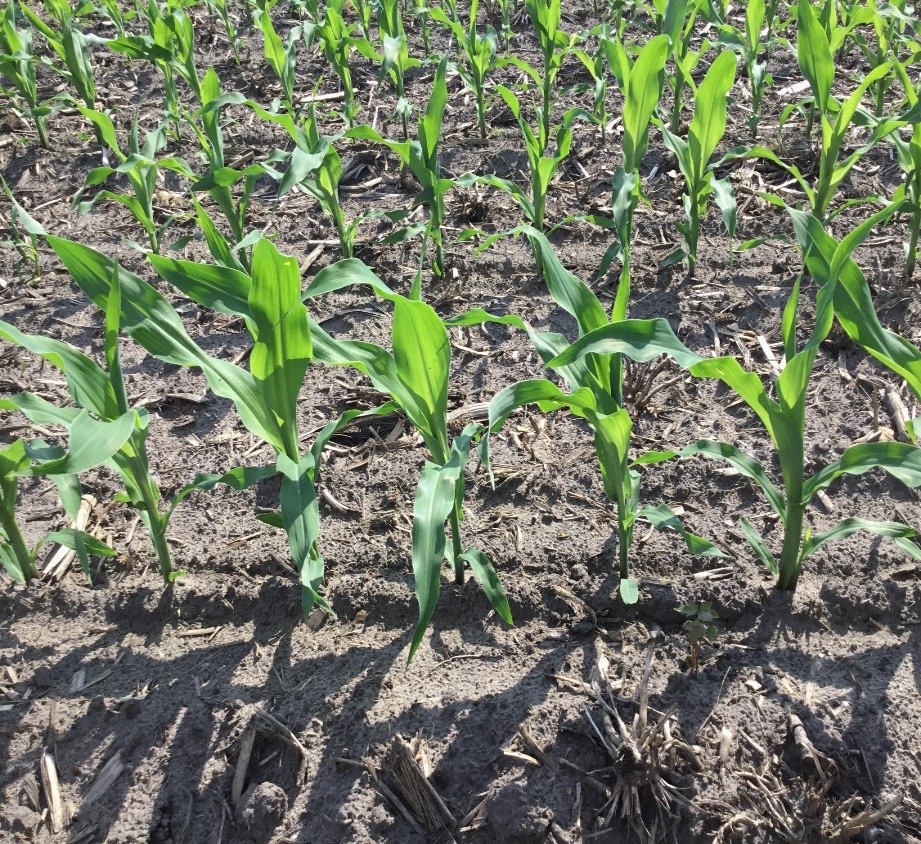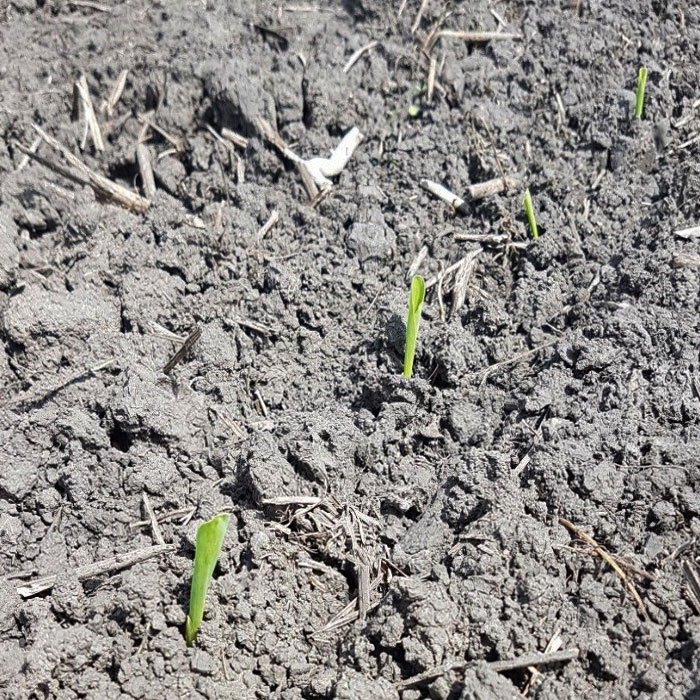Late Planted Corn – Expectations and Management
June 24, 2019An unprecedented late planting season combined with slower than normal crop development is top of mind for many producers. How this corn crop is managed through the season is key to having success. Understanding the environment and how corn hybrids respond to late planting will help focus management efforts when time is limited.
How does 2019 compare?
A common tool to compare historical seasons is www.farmzone.com. Using this tool, users can compare different regions across Canada to determine the average number of CHUs accumulated over time. Below is an example of historical CHU averages from 2010 to present for four cities in Ontario. Currently, we have accumulated lower than the average CHUs across the province however long-range forecasts are showing more positive trends especially as nighttime temperatures increase.
Figure 1: Historical CHUs Accumulated Across 4 Cities.
(Data sourced from www.farmzone.com)
| Average CHUs (Start – Oct 10 from 2010-17.) |
Average CHUs (2010-2017) | CHUs 2019 | % Behind Normal | |||
| 01-May | 25-May | 10-Jun | May 1 – June 10 | May 1 – June 10 | ||
| Chatham | 3707 | 3346 | 2987 | 720 | 621 | 14 |
| Woodstock | 3257 | 2954 | 2642 | 615 | 529 | 14 |
| Lindsay | 2874 | 2651 | 2364 | 510 | 419 | 18 |
| Cornwall | 3187 | 2884 | 2579 | 608 | 432 | 29 |
Late Planting and Hybrid Maturity
Corn hybrids planted later than normal have the ability to be somewhat elastic when it comes to adapting to a shorter growing season. Research has shown that hybrids planted late are significantly quicker to emerge, silk and reach black layer in comparison to earlier planting dates (Figure 2) (Nielsen et al., 2002). Overall in this research, late planted hybrids reached silking 14 days earlier and matured just over 9 days earlier vs the same hybrid planted 5 weeks earlier.
Figure 2: Effect of Late Planting on Corn Development
(Calendar days required to reach development stages – Adapted from Nielsen et al., 2002)
(DAP=Days after planting)
| Planting Date | DAP to Emergence | DAP to Silking |
DAP to Black Layer |
| 03-May | 10.5 | 75.2 | 138.4 |
| 22-May | 8.4 | 65.9 | 131.5 |
| 11-Jun | 5.2 | 61 | 129.1 |
| Difference (May 3 – June 11) | -5.3 | -14.2 | -9.3 |
| Sig. Diff. (P>0.05) | * | * | * |
Does a hybrid change with late planting?
Researchers from Minnesota compared how a corn hybrid changes across a 4 week planting window. Hybrids planted later do not differ significantly in plant leaf architecture, the ability to intercept light, stalk diameter, stalk lodging and # of kernels per m2 (Van Roekel et al., 2011). The critical yield factor that did change was a decrease in kernel weight (Van Roekel et al., 2011). Decreases in kernel weight result in an overall decrease in yield and were associated with less favourable growing conditions during grain fill. The positive result out of this research was that when the grain fill period was favourable yield declines from late planting were not as significant.
Should management practices change with late planted corn?
Knowing that late planted corn has some elasticity in maturity and that decreased kernel weight accounts for a significant portion of the lower yield it is important to protect yield potential. Best management practices such as timely weed control and supplying adequate nitrogen are crucial to maintain the evenness of the crop and protect yield. In addition to these, a fungicide application at VT has shown to increase kernel weight of corn which may help preserve yield on a field by field basis.
Figure 3: Range of Corn Development in Southwestern Ontario.
3a. Corn planted on May 25.

3b. Corn planted June 13.

The extended planting window has caused significant crop staging differences on farm (Figure 3). The large differences in staging is going to reflect a prolonged period of weed control, nitrogen and fungicide applications. To maintain yield, it is critical that growers stay ahead of the crop. A later planted crop often condenses the calendar leading to more frequent management practices. Constant crop monitoring and timely applications will be key to 2019. Growers who keep crop silking records of previous crops can compare 2019 and gauge how the crop is progressing. Knowing these dates can help prepare expectations for harvest.
Nielsen, R.L, P.R. Thomison, G.A. Brown, A.L. Halter, J. Wells, K.L. Wuethrich. 2002 Delayed planting effects on flowering and grain maturation of dent corn. Agronomy Journal 94:549-558.
Van Roekel, R.J. and J.A. Coulter. 2011. Agronomic responses of corn to planting date and plant density. Agronomy Journal 105:1414-1422.
